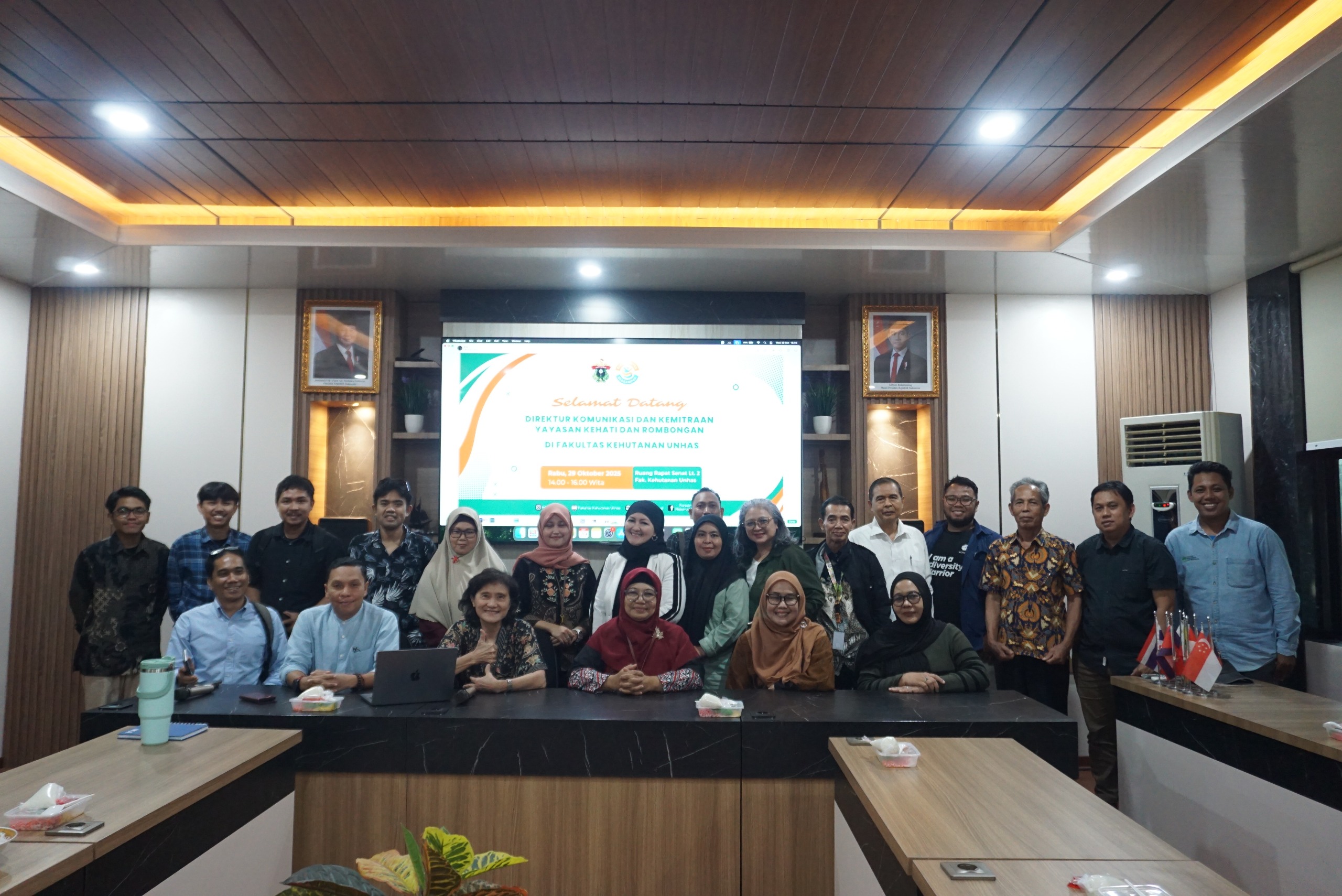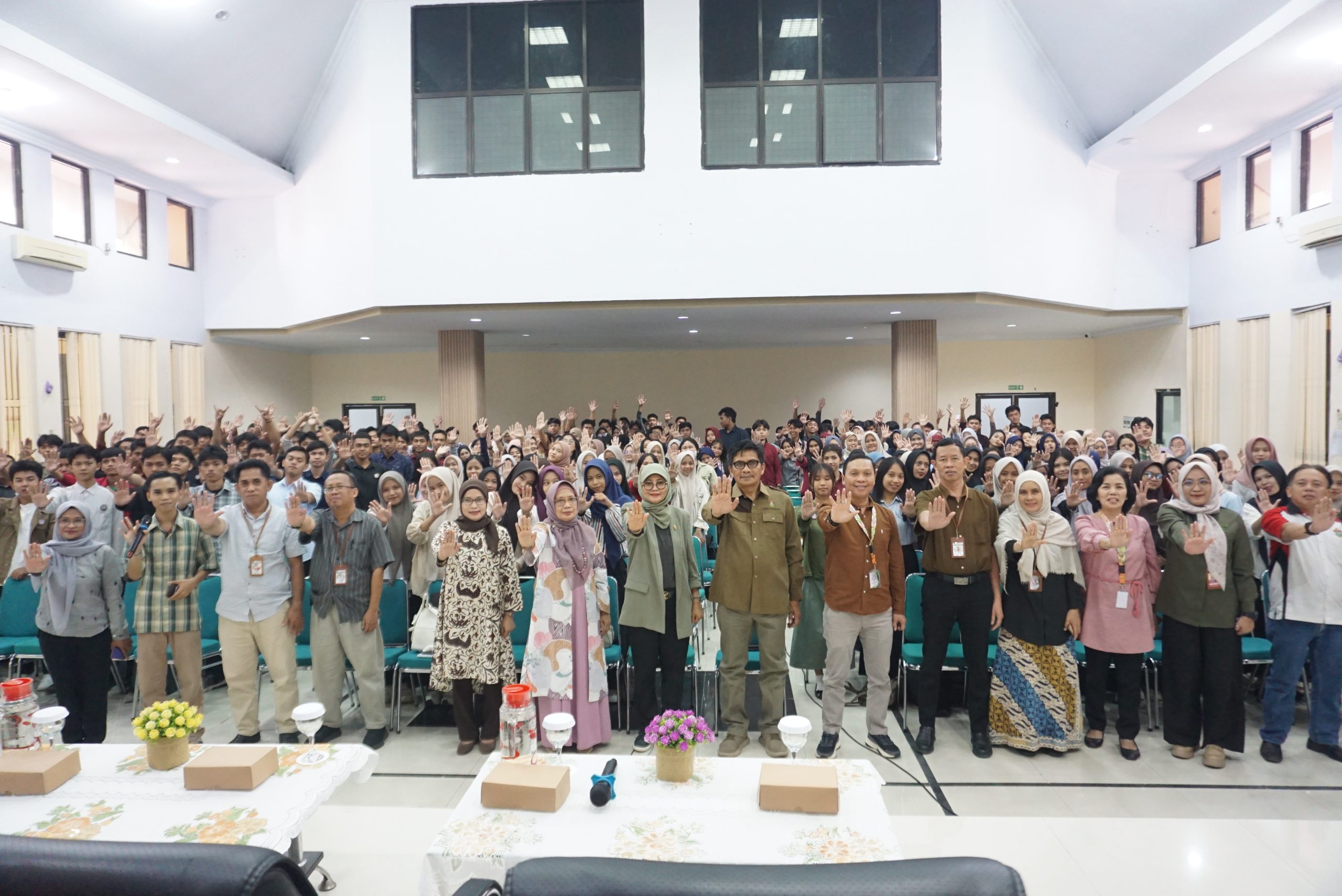Tamalanrea-Makassar. The Forestry Engineering Study Program (Prodi) of the Faculty of Forestry, Hasanuddin University (Unhas) again held a public lecture entitled Fungi Among Us with the theme “A Public Lecture on Tropical Fungi and Their Roles in Ecosystem”. The activity took place starting at 13.00 WITA in the 1st Floor Hall of the Faculty of Forestry, Unhas Tamalanrea Campus, Makassar, Wednesday (16/4/2025).
Starting the activity, Deputy Dean for Partnership, Research, Innovation and Alumni of the Faculty of Forestry Unhas, Syahidah, S.Hut., M.Si., Ph.D. In his speech, he said that mushrooms were quite interesting because public lectures discussing mushrooms had been held twice by the Forestry Engineering study program.
“This activity is quite important for students and lecturers because information related to mushrooms is obtained from practitioners who carry out research directly so that the information provided has been proven by research,” explained Syahidah.
Syahidah further said that he hoped that such activities could provide benefits for students and lecturers, and that collaboration between UPM and the Unhas Forestry Faculty could continue.
Present as a resource person was Dr. Razak Bin Terhem (Universiti Putra Malaysia) presented material with the theme “The Rules of Fungi in the Trophic”, Nura Adilla Shamsul Kamar (Universiti Putra Malaysia) presented material on diseases assessment of major urban tree species in Kuala Lumpur via molecular identification of pathogenic fungi and targeted fungicide evaluation and Nur Khatijah Mohd Zin (Universiti Putra Malaysia) presented material on iron oxide green synthesis using fungal secondary metabolite extract.
Razak Bin Terhem in his material presented the results of his research regarding the role of fungi on trees in Malaysia, one of which is in the Sabah area. This research shows various tree health statuses from malignant to death from E. Pellita tree planting caused by pathogenic fungi.
Pathogenic fungi can cause disease in humans, animals and plants. Pathogenic fungi in plants can damage plants such as armillaria root disease in trees.
“In identifying a tree’s health status, it can be seen from its color. Healthy trees are green, while unhealthy trees are less green,” said Razak.
Nura Adilla Shamsul Kamar (Universiti Putra Malaysia) in her material said that she was researching disease assessment of urban tree species in Kuala Lumpur through molecular identification of pathogenic fungi and fungicide evaluation.
“Trees are very important in urban environments because they provide shade and purify the air. However, fallen trees can be a big challenge that can cause disease and damage to the tree structure,” explained Nur Adillah.
The cause of disease in trees is abiotic disturbances caused by abiotic (non-living and non-infectious agents) such as herbicides, soluble salts, soil compaction and temperature. And biotic disorders are disorders caused by biotics (living agents), such as viruses, bacteria and fungi.
The activity went smoothly until 16.00 WITA and ended with a discussion and group photo session.






